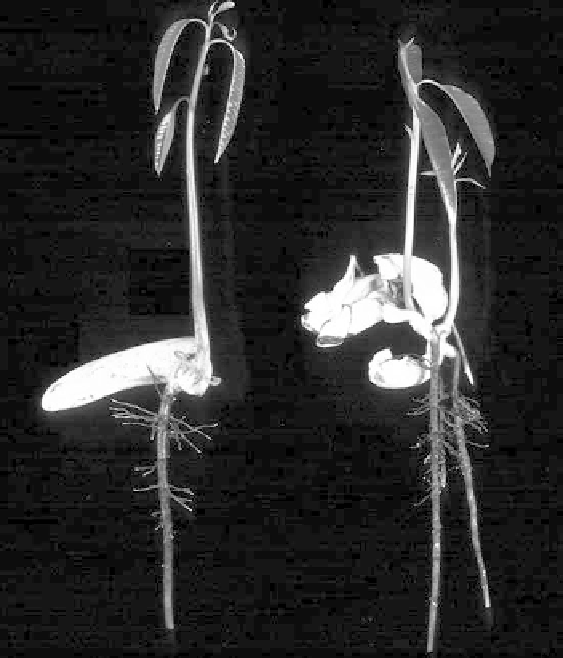Agriculture Reference
In-Depth Information
scent. Flies seem to be the main pollination agents, with bees and other insects
contributing. Wind may play a small role. Pesticide use during fl owering
af ects insect pollination, pollen germination and ovule fertilization.
Polyembryony
Subtropical Indian cultivars and their derivatives, characterized by roundish,
colourful fruit and susceptibility to anthracnose, are largely monoembryonic
(Fig. 10.5a). Cultivars classifi ed in the Indochina-Philippine group from South-
east Asia are largely polyembryonic, relatively resistant to anthracnose and
often lack bright colour (Campbell, 1961). Polyembryony is the condition in
which several genetically identical embryos develop from the nucellar tissue of
the ovary and often suppress zygotic embryo development (Fig. 10.5b). These
polyembryous fruits are typically more elongated than round (Fig. 10.6).
(a)
(b)
Fig. 10.5.
Monoembryony (a) and polyembryony (b) in mango seedlings. In
polyembryony, several genetically identical embryos can be formed from the
nucellar tissue and often suppress the zygotic embryo.

